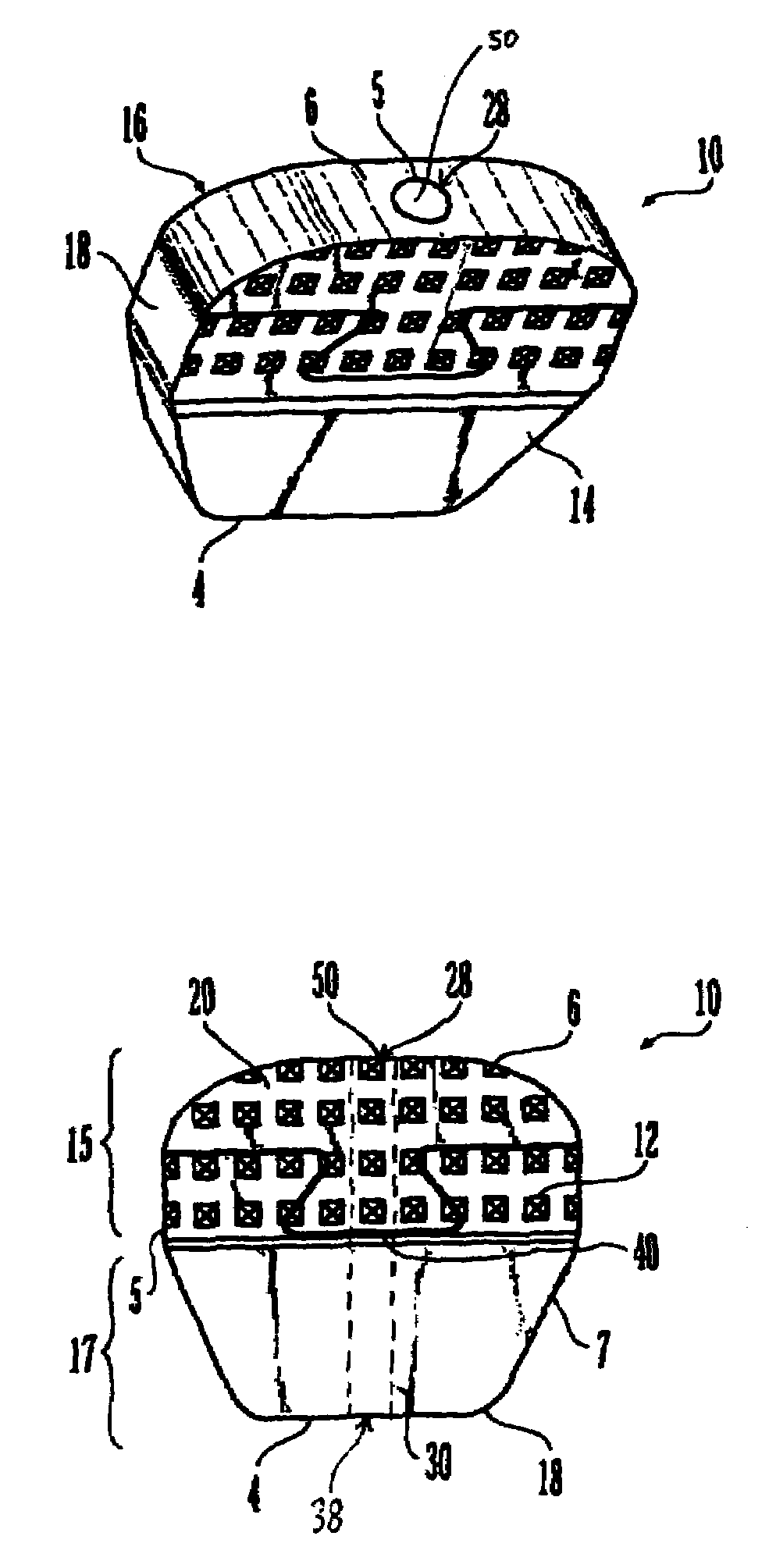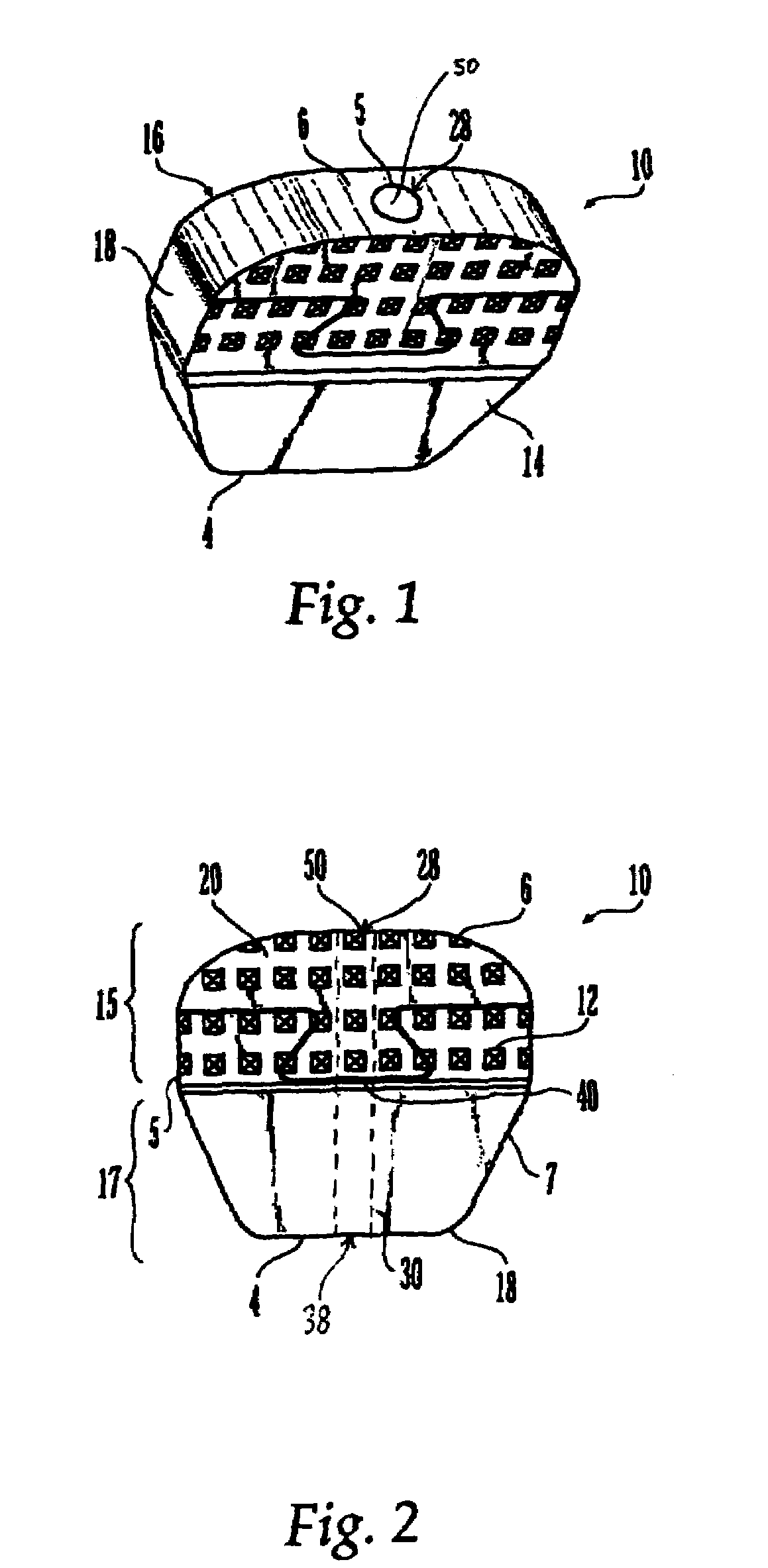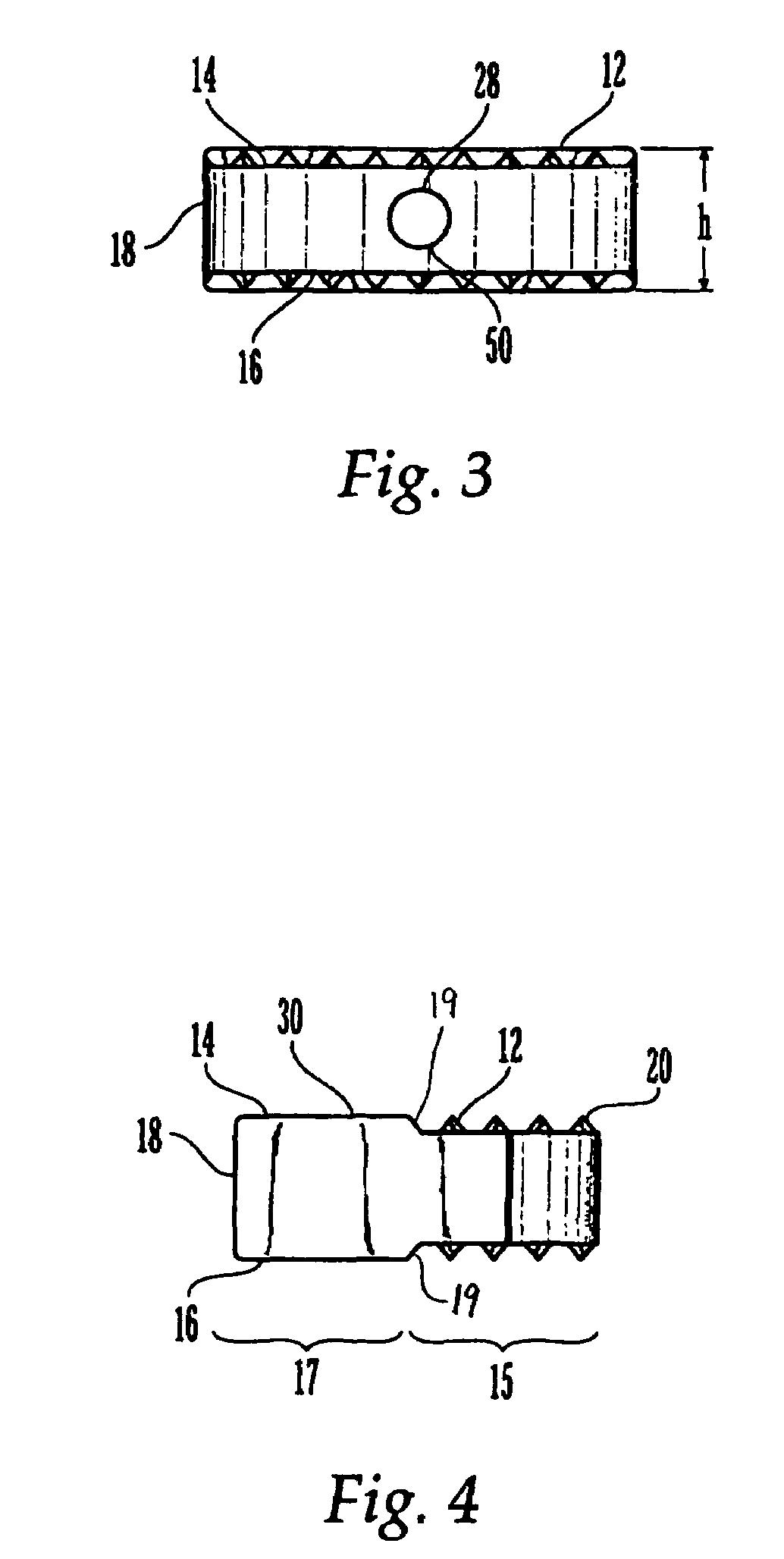Multipiece allograft implant
a multi-piece, allograft technology, applied in the field of allograft implants, can solve the problems of inability to withstand long-term use, metal cages suffer from the disadvantage of drilling and tapping the vertebral endplates for insertion, and the incidence of subsidence in long-term use is not known, so as to prevent the displacement of the implan
- Summary
- Abstract
- Description
- Claims
- Application Information
AI Technical Summary
Benefits of technology
Problems solved by technology
Method used
Image
Examples
Embodiment Construction
[0027]FIG. 1 shows a perspective view of a first embodiment of an intervertebral allograft spacer or implant 10 according to the present invention. Implant 10 preferably is shaped to conform in size and shape with at least a portion of the end plates of the vertebrae between which implant 10 is to be used. The outer periphery of implant 10 may be sided and shaped to match the outer periphery of the end plates of the vertebrae between which the implant 10 is to be used. Alternatively the outer periphery of the implant 10 may be sided and shaped to match only a portion of the outer periphery of the end plates of the vertebrae, or it may have an outer periphery that may not match the peripheral shape of the end plates of the vertebrae at any location.
[0028]Implant 10 generally comprises a superior surface 14, an inferior surface 16, and an exterior surface 18. Superior surface 14 and inferior surface 16 further may comprise toothed sections 15 and flat sections 17. Toothed sections 15 ...
PUM
 Login to View More
Login to View More Abstract
Description
Claims
Application Information
 Login to View More
Login to View More - R&D
- Intellectual Property
- Life Sciences
- Materials
- Tech Scout
- Unparalleled Data Quality
- Higher Quality Content
- 60% Fewer Hallucinations
Browse by: Latest US Patents, China's latest patents, Technical Efficacy Thesaurus, Application Domain, Technology Topic, Popular Technical Reports.
© 2025 PatSnap. All rights reserved.Legal|Privacy policy|Modern Slavery Act Transparency Statement|Sitemap|About US| Contact US: help@patsnap.com



